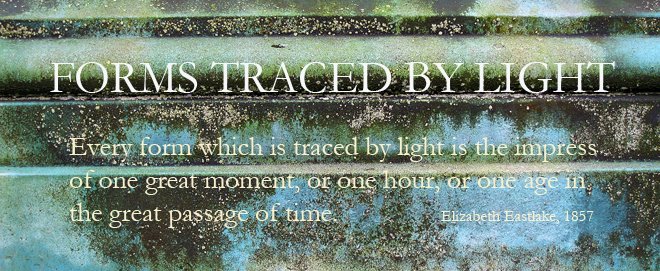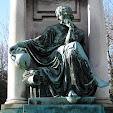I feel saturated with looking at masses of C19th Californian art today in the Crocker Art Museum in Sacramento (and some C20th, and contemporary stuff, too, of course) - some of it for research; some for teaching - though the two blend - which means that I was taking many, many pictures of details. So here are just a few of them, starting with an avatar of Gramsci, in Charles Christian Nahl's And a Little Child Shall Lead Them - a kind of Germanic/West Coast answer to Edward Hicks' multiple Peaceable Kingdoms. Nahl moved from Germany, to Paris, to New York, to California in 1851 (thinking to strike it rich with gold, but not doing so ... so he turned back to painting).
This is, however, part of a Gold Rush portrait of a young girl, Little Miss San Francisco (1853) - she has a chunky gold necklace, gold braid on her dress's shoulders, and gold decorations on these shoes (so how quickly will she grow out of them, one wonders?).
Here are some of my favorite vegetables, from William Hahn's Market Scene, Sansom Street, San Francisco (1872) - I was super pleased to be able to get detailed images of all the ethnic diversity in this, from an African American woman, to Chinese, to white agriculturalists; and of all the advertising - one can't quite make out all the lettering in reproductions that I've seen, which is frustrating, but it's a showpiece in getting students to think through Californian history (and to realize that the prevalence of kale in Californian cuisine has a long, long history).
I was very taken by all the paintings by Edwin Deakin - lots of landscapes, and also still lifes: Deakin emigrated from Sheffield (indeed, very many of the paintings demonstrate how C19th Californian art history is also a history of 1st generation immigration): here you see his reflection in the polished brass jug behind the onions.
And here's some appalling pollution! from the steam engine driving Hoag's Monitor, a monstrous wheat separator: it's from Andrew Putnam Hill's George W. Hoag's Record Wheat Harvest (1876), which is an extraordinary record of industrialized agriculture.
The Crockers were very keen on German art - and, indeed, northern European art more generally (though there wasn't a single British work on show, unless one's counting immigrants: I must find out if there are any in the collection at all). This is the top of an extraordinary German piece, Theobald Reinhold von Oer's 1868 Allegory of Mining - both its dangers (underground) and benefits, like the refining furnace chuffing away here. We might see industrial pollution foretold: I suspect it seemed more like profitability, at the time.
After this ... and much much more - I went on a tour of Leland Stanford's Sacramento mansion (no pictures allowed inside, alas), which reminded me that I'm looking forward to Richard White's book about Jane Stanford's murder/death that's out next month, and after a walk, returned through the Peace Garden that's part of the Capitol Park, and is full full full of roses.












No comments:
Post a Comment